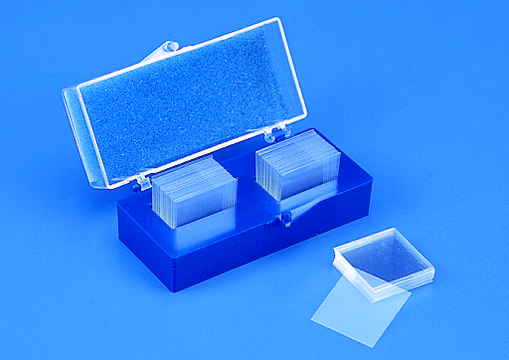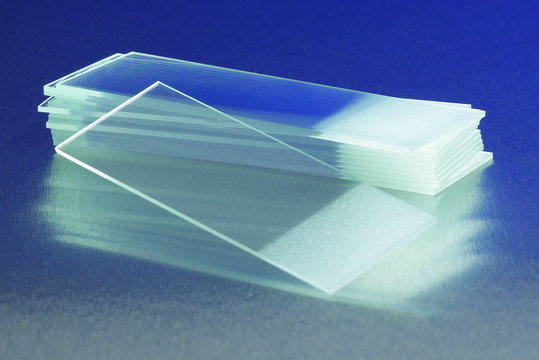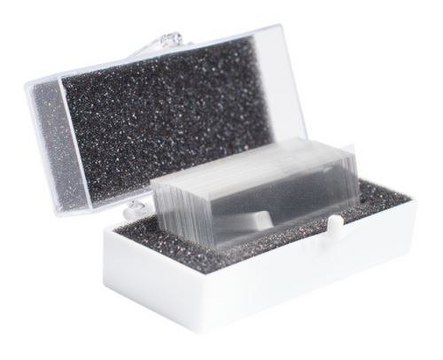643289
Gold coated glass cover slip
99.999% (Au), diam. × thickness 15 mm × 130-170 μm, layer thickness 100 Å
Sign Into View Organizational & Contract Pricing
All Photos(1)
About This Item
Empirical Formula (Hill Notation):
Au
CAS Number:
Molecular Weight:
196.97
MDL number:
UNSPSC Code:
12141717
PubChem Substance ID:
NACRES:
NA.23
Recommended Products
Assay
99.99% (Ti)
99.999% (Au)
diam. × thickness
15 mm × 130-170 μm
layer thickness
100 Å
refractive index
n20/589.3 1.523
matrix attachment
Titanium, as adhesion layer used to bind the gold to the borosilicate glass cover slip
SMILES string
[Au]
InChI
1S/Au
InChI key
PCHJSUWPFVWCPO-UHFFFAOYSA-N
Looking for similar products? Visit Product Comparison Guide
Related Categories
Features and Benefits
Corning® 0211 zinc titania glass, a particular formulation of borosilicate glass that lends itself very well to being sliced into thin pieces.
The gold surface is highly polycrystalline but shows a tendency towards <111> orientation.
Other Notes
Titanium adhesion layer used to bind the gold to a borosilicate glass cover slip.
Legal Information
Corning is a registered trademark of Corning, Inc.
Regulatory Information
新产品
Choose from one of the most recent versions:
Already Own This Product?
Find documentation for the products that you have recently purchased in the Document Library.
Tae-Sik Cho et al.
Journal of nanoscience and nanotechnology, 13(5), 3711-3714 (2013-07-19)
The crystallization of Au/glass ultrathin films for surface plasmon resonance (SPR) biosensor has been studied using synchrotron X-ray scattering and field emission scanning electron microscope. In films thinner than 30 nm, crystallized Au grains with [111] preferred orientation were formed
Zhengxia Liu et al.
Journal of biomedical nanotechnology, 9(6), 1017-1028 (2013-07-19)
Ischemic stroke is a leading cause of death and disability, and the treatment options are limited. Recent studies demonstrated that the promising applications of gold nanoparticles (Au-NPs) as intrinsic therapeutics; however, little is known about the effect of Au-NPs on
Young Joo Choi et al.
Journal of nanoscience and nanotechnology, 13(6), 4437-4445 (2013-07-19)
Gold nanorods (Au NRs) that absorb near-infrared (NIR) light have great potential in the field of nanomedicine. Photothermal therapy (PTT), a very attractive cancer therapy in nanomedicine, combines nanomaterials and light. The aim of this study was to elucidate the
Young Min Bae et al.
Journal of biomedical nanotechnology, 9(6), 1060-1064 (2013-07-19)
We report on the enhancement of sensitivity of SPR biosensor by modifying the metal surface. A mixture layer, in which gold and dielectric medium coexist, was simply prepared by increasing the roughness of gold surface deposited onto a glass substrate
Tianxun Gong et al.
Journal of biomedical nanotechnology, 9(6), 985-991 (2013-07-19)
In this paper, we proposed the use of gold nanoparticles as plasmon scattering probes for dark-field multiplex imaging of live cancer cells. By carefully engineering the surfaces, aqueous dispersions of anti-EGFR antibody-conjugated gold nanospheres and gold nanorods are prepared. We
Articles
Synthesis of Melting Gels Using Mono-Substituted and Di-Substituted Alkoxysiloxanes
Our team of scientists has experience in all areas of research including Life Science, Material Science, Chemical Synthesis, Chromatography, Analytical and many others.
Contact Technical Service


